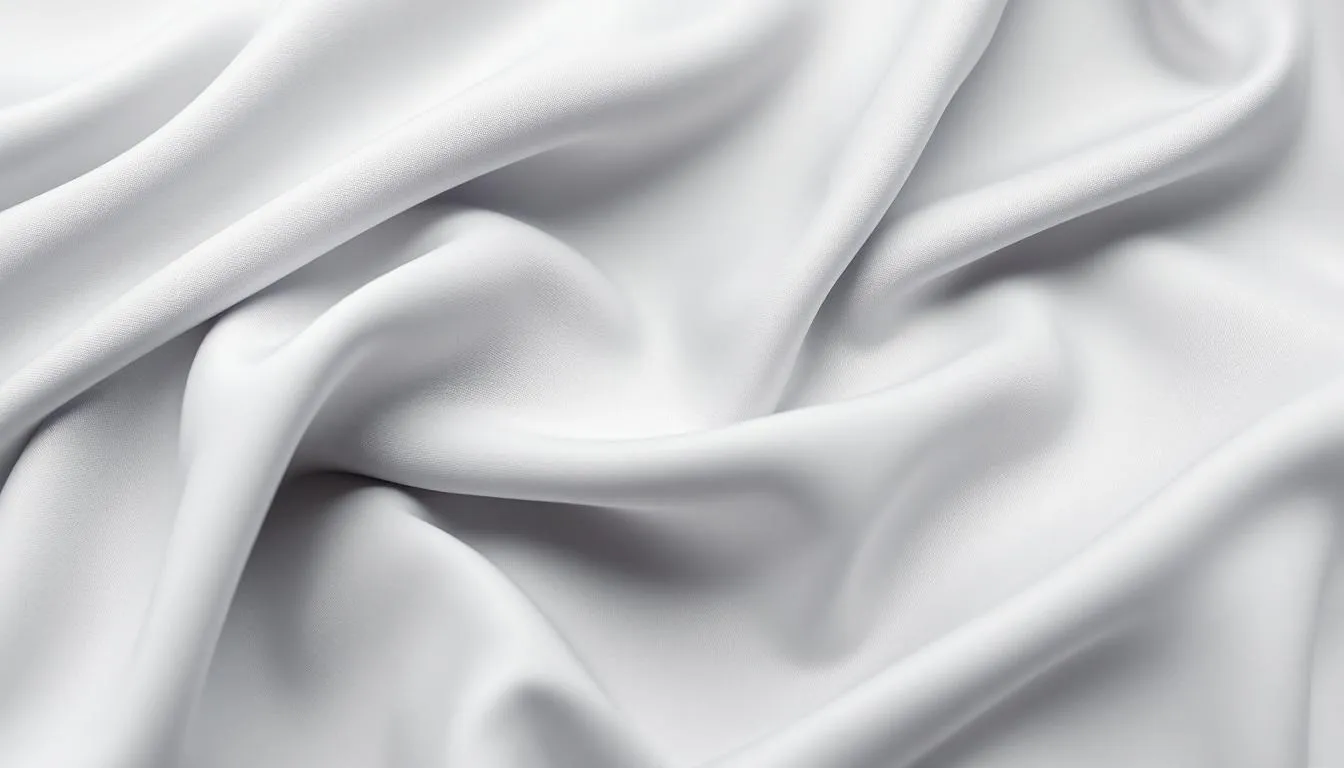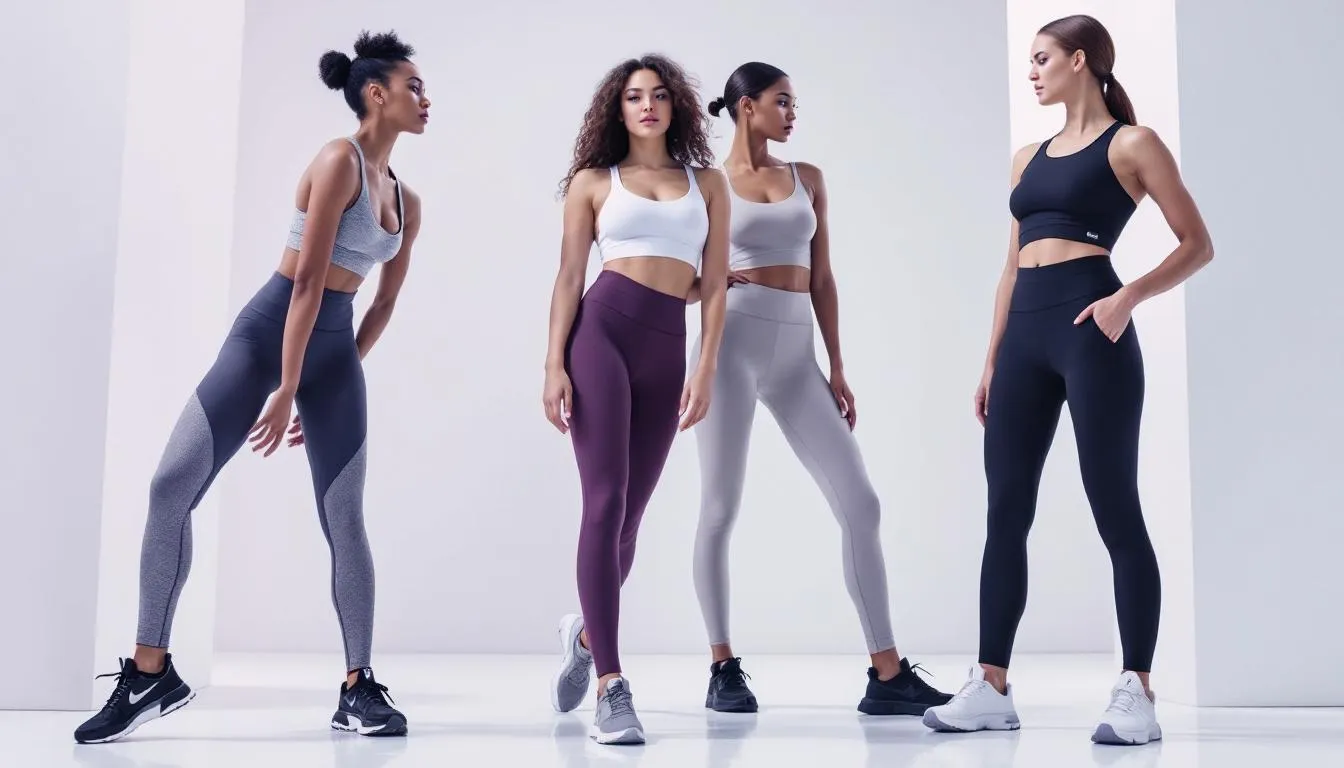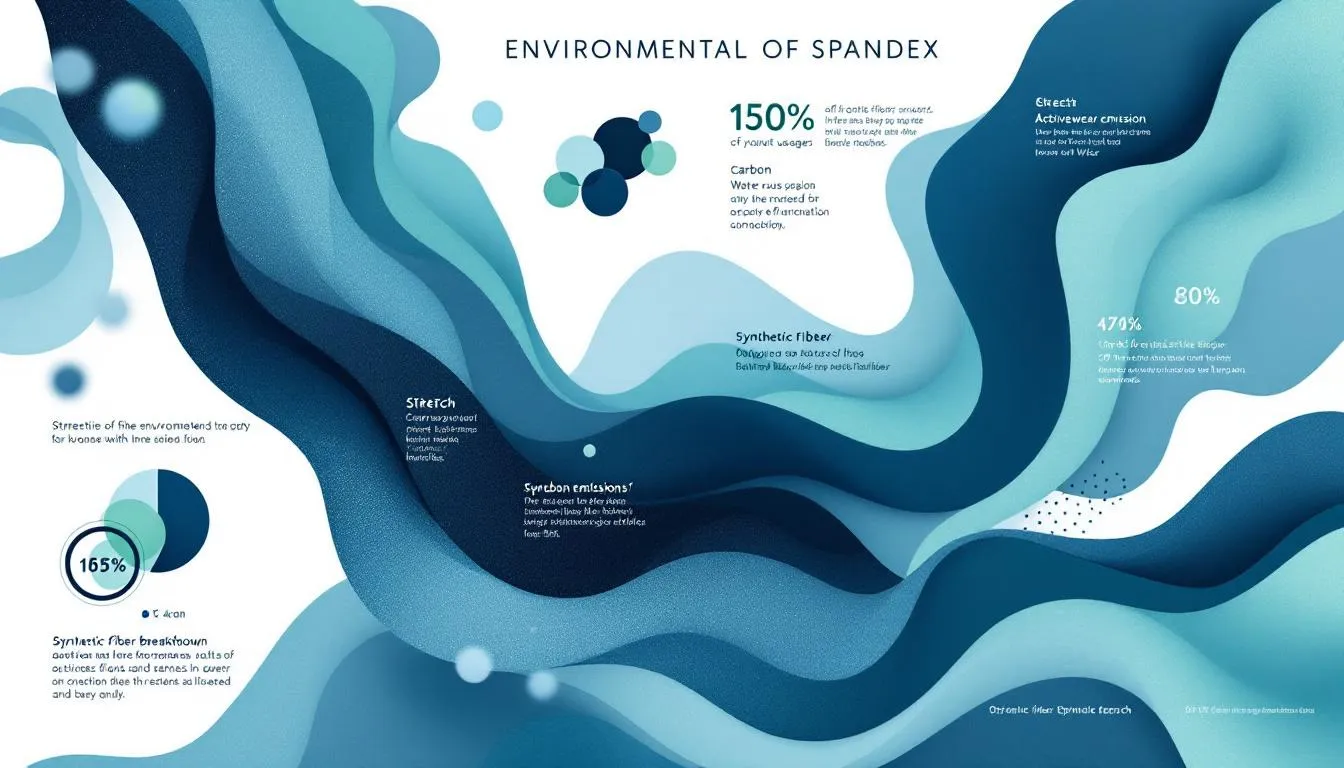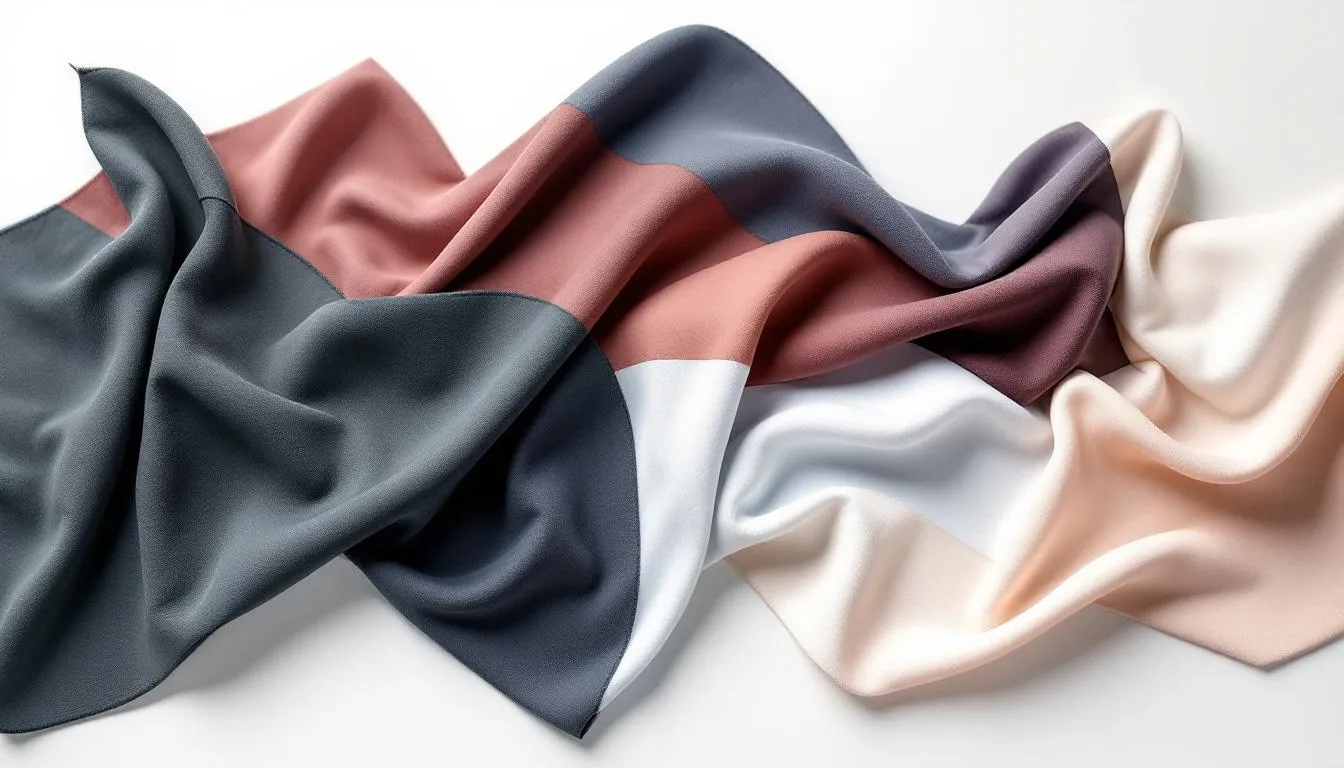Spandex Fabric Material: Properties, Production, and Uses Explained
Spandex Fabric Material: Properties, Production, and Uses Explained—this versatile textile has revolutionized the fashion and activewear industries with its unmatched stretch, durability, and comfort.
Spandex fabric material, or elastane, is a highly stretchable synthetic fiber. This article covers its key properties, production methods, common uses, environmental impact, and future trends.
Key Takeaways
-
Spandex, known for its exceptional stretch and durability, is a versatile fabric used primarily in activewear and form-fitting garments.
-
The production of spandex involves a complex process primarily based on solution dry spinning, which relies heavily on petroleum-based materials and has significant environmental impacts.
-
Innovations in spandex production are focusing on sustainability, with companies exploring bio-based materials and advanced technologies to enhance both performance and environmental friendliness.
Understanding Spandex Fabric Material
 An example of spandex fabric material with a close-up view showing its stretchy texture.
An example of spandex fabric material with a close-up view showing its stretchy texture.
Spandex, also called elastane, is celebrated for its remarkable stretch and resilience. This synthetic fiber can expand 5-8 times its original size without losing its shape, making it essential for form-fitting and performance garments. It provides the comfort of stretchy clothes that move with you, adapting to every twist and turn of your elastic body.
Besides its impressive stretch, spandex is breathable and moisture-wicking, keeping you comfortable during intense activities. This amazing nice stretch makes it ideal for activewear, where flexibility and comfort are crucial.
Spandex fabric’s unique blend of elasticity, breathability, and durability makes it highly versatile. From everyday apparel to specialized clothing, it improves the fit, comfort, and functionality of many garments. Blended with nylon, polyester, or cotton, spandex adds flexibility that enhances the wearing experience.
Production Process of Spandex Fiber
Producing spandex fiber is a complex process, mainly using solution dry spinning, which accounts for about 95% of global production. This method starts with creating a polyether-polyurea copolymer, primarily composed of polyurethane.
The process involves the following steps:
-
Initially, macroglycol is mixed with a diisocyanate monomer under controlled heat and pressure to form a prepolymer.
-
This prepolymer then reacts with diamine acid, starting a chain extrusion process essential for developing the spandex fiber.
-
The resulting viscous substance is then diluted with a solvent for further processing.
The process of forming spandex fibers involves the following steps:
-
The diluted prepolymer is extruded through a spinneret, forming liquid strands of spandex fiber.
-
These strands are exposed to heated solvent gas and nitrogen, solidifying them into final spandex fibers.
-
The fibers are treated with a finishing agent like magnesium stearate.
-
Finally, the fibers are wound onto spools for fabric production.
This intricate process ensures the production of high-quality spandex fibers, known for their superior elasticity and tough smooth durability, produced through advanced woven techniques in crafts and delivery, with a focus on width and knit, providing a soft hand.
 Three women wearing spandex swimwear
Three women wearing spandex swimwear
Types of Spandex Fabrics
Spandex fabrics come in various types, each suited to specific applications and preferences. A popular blend is nylon-spandex, often used in high-performance clothing for its durability and shape retention. Common mixtures include 80% nylon and 20% spandex, and 92% nylon and 8% spandex, offering different balances of stretch and firmness.
Polyester-spandex blends are also popular, known for being lightweight and durable, making them ideal for sportswear and swimwear. These fabrics typically comprise 95% polyester and 5% poly spandex, offering a good mix of elasticity and resilience.
Rayon-spandex blends provide a soft, luxurious feel, perfect for dresses and blouses where comfort and drape are essential. Additionally, sequin spandex fabric, sold by the yard in various patterns, is popular for creating eye-catching, stretchable costume and apparel that shine.
Blending spandex with other fibers enhances their elasticity, making the resulting fabrics versatile for various applications. Whether it’s nylon, polyester, or rayon, adding spandex improves the fabric’s stretch and recovery properties.
Common Uses of Spandex in Apparel
 A variety of apparel made from spandex fabric, including yoga pants and leggings.
A variety of apparel made from spandex fabric, including yoga pants and leggings.
Spandex fabric’s exceptional stretch and recovery make it a favorite in activewear. From yoga pants to cycling shorts and swimwear, spandex is the go-to material for garments that need to move with the body. Four-way stretch fabrics, which stretch in multiple directions, are especially valued in fitness clothing for their flexibility and comfort.
However, the uses of spandex extend beyond athletic wear. Blended with cotton, it provides comfort and breathability while adding necessary stretch, making it ideal for casual wear like leggings and everyday clothes. In undergarments, spandex offers a perfect combination of comfort and support, maintaining elasticity over time.
Spandex is also used in specialized apparel, such as motion capture suits for the film industry, where its form-fitting nature is crucial. Wool-spandex blends enhance the fit and comfort of winter apparel while maintaining insulation properties.
Overall, spandex’s ability to enhance fit, comfort, and functionality makes it a versatile addition to various clothing items, from everyday wear to specialized garments.
Environmental Impact of Spandex Production
 An infographic illustrating the environmental impact of spandex production.
An infographic illustrating the environmental impact of spandex production.
While spandex fabrics offer numerous benefits, their production has significant environmental costs. Spandex is non-biodegradable, potentially taking up to 200 years to decompose in landfills. Classified as Class E in sustainability, spandex is among the least sustainable fibers.
Producing spandex fibers is highly energy-intensive, relying on petroleum-based raw materials, which significantly contribute to environmental pollution. Additionally, the manufacturing process involves chemicals that can be harmful to both factory workers and the environment if not properly managed.
The lifecycle of spandex fabrics includes a carbon-intensive transportation phase, further contributing to their overall environmental footprint. Additionally, spandex fiber production leads to the emission of microplastics, posing significant environmental risks, especially in marine ecosystems.
Despite these challenges, there is a growing focus on adopting environmentally friendly and bio-based materials in spandex production. Innovations like using biobased 1,4-butanediol from fermentation technology are steps toward more sustainable spandex production.
Cost and Availability of Spandex Fabrics
 A display of various spandex fabrics available for purchase, showing their textures and colors.
A display of various spandex fabrics available for purchase, showing their textures and colors.
The cost of spandex fabrics varies widely depending on the type and blend. Some spandex fabrics can cost as low as €4.99 per yard, while specialty fabrics may command higher prices due to unique characteristics or manufacturing processes.
The global market for spandex is projected to grow significantly:
-
Expected to reach $21.9 billion by 2034, up from $10 billion in 2024
-
Reflects a compound annual growth rate of 8.1%
-
China is the primary producer, accounting for approximately 75% of the global market
-
This concentration raises concerns about fossil fuel dependency.
Spandex fabrics are widely available through various online retailers, making it easy for consumers to shop for them from home. Many of these textiles are imported from major textile production countries like China and Taiwan.
Innovations and Future of Spandex
 A futuristic concept design of spandex innovations in activewear
A futuristic concept design of spandex innovations in activewear
The future of spandex is promising with innovations aimed at enhancing its functionality and sustainability. The LYCRA Company has introduced technologies like LYCRA® FitSense, which allows for targeted support in garments, enhancing both comfort and fit. This technology represents a significant advancement in how spandex can improve the wearer’s experience.
Additionally, companies like Hyosung are investing heavily in sustainable spandex production. By using fermentation technology from sugar to produce biobased 1,4-butanediol, Hyosung aims to reduce the environmental footprint of spandex production. These innovations suggest a future where spandex can be both high-performing and environmentally friendly.
Spandex Fabric Certifications
Certifications play a crucial role in ensuring the quality, safety, and environmental friendliness of spandex fabrics. They validate that the fabrics meet specific standards, providing consumers with reliable products.
Certifications like the Global Recycled Standard (GRS) and the Recycled Claim Standard (RCS) confirm the recycled content in spandex fabrics. These certifications ensure that sustainable practices are verified, promoting the use of recycled materials and helping consumers make informed choices.
Summary
In summary, spandex fabric is a remarkable material known for its elasticity, durability, and comfort. Its production process, while complex, results in a versatile fiber that enhances a wide range of garments. Despite its environmental impact, efforts towards sustainable production are promising.
As we look to the future, innovations and certifications will play a key role in making spandex a more sustainable choice. Whether you’re a designer, manufacturer, or consumer, understanding the intricacies of spandex can help you make more informed decisions and appreciate the value of this versatile material.
Frequently Asked Questions
What makes spandex fabric so stretchy?
Spandex fabric's exceptional stretchiness comes from its unique synthetic fibers, allowing it to expand up to 5-8 times its original size. This remarkable elasticity provides comfort and flexibility in various garments.
How is spandex fiber produced?
Spandex fiber is produced primarily through solution dry spinning, which involves a series of chemical processes and extrusion steps to create the final product. This method ensures the elasticity and durability that spandex is known for.
What are the environmental impacts of spandex production?
Spandex production has significant environmental impacts, as it is energy-intensive, relies on petroleum-based materials, and results in non-biodegradable fabrics that contribute to pollution and microplastic emissions. These factors highlight the need for more sustainable textile alternatives.
Are there any sustainable spandex options available?
Yes, there are sustainable spandex options available, with companies focusing on bio-based production and certifications like GRS and RCS to promote recycled content and sustainable practices.
Where can I buy spandex fabrics?
You can buy spandex fabrics from numerous online retailers, many of which source their materials from textile production hubs like China and Taiwan. It’s advisable to compare options to ensure you find the best quality and price.

